The Huawei Honor 8 Review
by Matt Humrick on October 13, 2016 8:00 AM EST- Posted in
- Huawei
- Smartphones
- Mobile
- Kirin 950
- honor
Design
With its eye on millennials, Huawei focused on giving the Honor 8 a stylish design. It takes some design cues from Huawei’s P9, but wraps them in a more rounded, smoother chassis like the iPhone’s. The aluminum frame is sandwiched between edge-to-edge glass on the front and back, giving it both a shiny, polished look and a very slippery feel that makes it difficult to grasp or to set on seemingly flat tables without it sliding off. The Honor 8 seems to loathe gravitational potential energy, because it’s always trying to drop to the floor.
The front and rear glass edges have a 2.5D radius that helps them blend into the chamfered edges on the aluminum frame. There’s still a small step as the materials do not flow together perfectly, but the edge breaks are enough to eliminate any sharpness along the sides while still providing some tactile feedback and additional grip when holding the phone.
As phones continually get thinner, it becomes increasingly difficult to find space within the chassis for a camera’s sensor and lens array, leading to unsightly camera bulges on the backs of some phones. The Honor 8’s dual cameras, however, sit flush with the back and are covered by the rear glass. Huawei is pretty proud of this accomplishment, and it’s directly related to its dual-camera setup. By using both sensors together, the Honor 8’s cameras collect the same amount of light as a single, larger sensor. And because the smaller sensors require less z-height to fit an equivalent focal length lens, the overall thickness of the camera module is reduced. The two smaller sensors also fit into the space above the display where there’s extra room to work with. Placing the camera(s) in a more central position on the back means that some of the z-height inside the chassis is taken up by the display assembly, forcing the camera module to protrude from the back like on the Galaxy S7.
Placing the rear cameras in the upper bezel means they need to be offset to one side in order to make room for the earpiece, front-facing camera, and sensors on the front. This results in some asymmetry, but I feel this is a fair compromise for a smooth back. Huawei did align the dual-color LED flash with the centered, circular fingerprint sensor on the back, which is a nice touch and keeps the elements on the back from looking too unbalanced. The capacitive fingerprint sensor is recessed slightly with a chamfered edge that makes it easy to locate.
Underneath the Honor 8’s rear glass is 15 different layers, including filters, color-etched nano-film, and a milled 3D diffraction grating that diffuses light in interesting ways when moving the phone. The color also changes depending on the ambient light, and there’s a subtle swirled texture beneath the glass when looking closely. This attention to detail gives the Honor 8 a luxurious appearance; however, the glass back tends to attract fingerprints and is obviously less durable than metal or plastic.
All of the buttons are located on the right edge, with a single-piece volume rocker positioned close to the top and just above the power button that has a very slight texture to it. The thumb on my larger-than-average hand falls right between the volume down button and the power button, making the controls easily accessible. People with smaller hands may have some difficulty reaching the volume buttons, though. Biasing the buttons towards the top, like Huawei does with the Honor 8, makes it less likely to press the buttons accidentally when handling or picking up the phone.
The SIM tray is located near the top of the left edge, and there’s a small, plastic antenna strip near the top of both edges. Because the pieces below the glass are made from plastic, there’s no need for the antenna strips to continue across the front and back.
The USB Type-C port is centered on the bottom edge, with the single, downward-firing speaker to one side and the 3.5mm headphone jack on the other. The second, noise-canceling microphone is on the top edge along with the IR blaster.
There are minimal bezels on the sides of the display, but the lower bezel is a bit larger than expected considering the fingerprint sensor is on the back and there’s no capacitive navigation buttons. While this places the top of the screen further out of reach, it does provide a place to hold the phone, especially in landscape, without accidentally tapping the screen.
The upper bezel is the same size as the lower. The earpiece is of the smaller variety, making it difficult to hear sometimes if not perfectly aligned with the ear. Like other Huawei phones, the Honor 8 hides a notification LED under the right side of the grille covering the earpiece. The front-facing camera and proximity/ambient light sensors sit to the left, an asymmetrical layout that makes room for the dual rear camera module on the other side.
The Honor 8 is slippery but comfortable to hold. Its rounded corners do not dig into the palm, and the radiused glass and slightly curved sides of the aluminum frame eliminate sharp edges. Its smooth, glossy appearance trades durability for elegance and matches the Galaxy S7 in build quality.
The Honor 8 currently comes in three different colors: Pearl White, Midnight Black, and Sapphire Blue like our review unit. The blue color is definitely my favorite, partially because it’s different from the usual silver and gold. Its shade changes from a deep blue to an electric blue depending on lighting conditions, making it nice to look at but difficult to photograph. Huawei is also adding a gold-colored version on October 20, 2016.


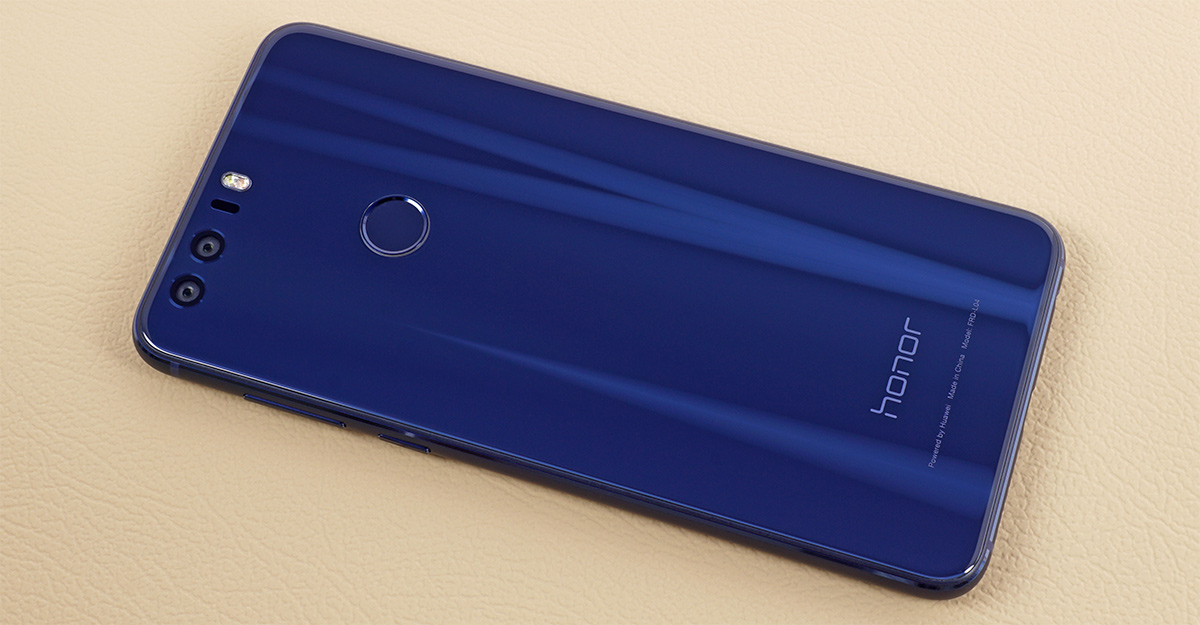
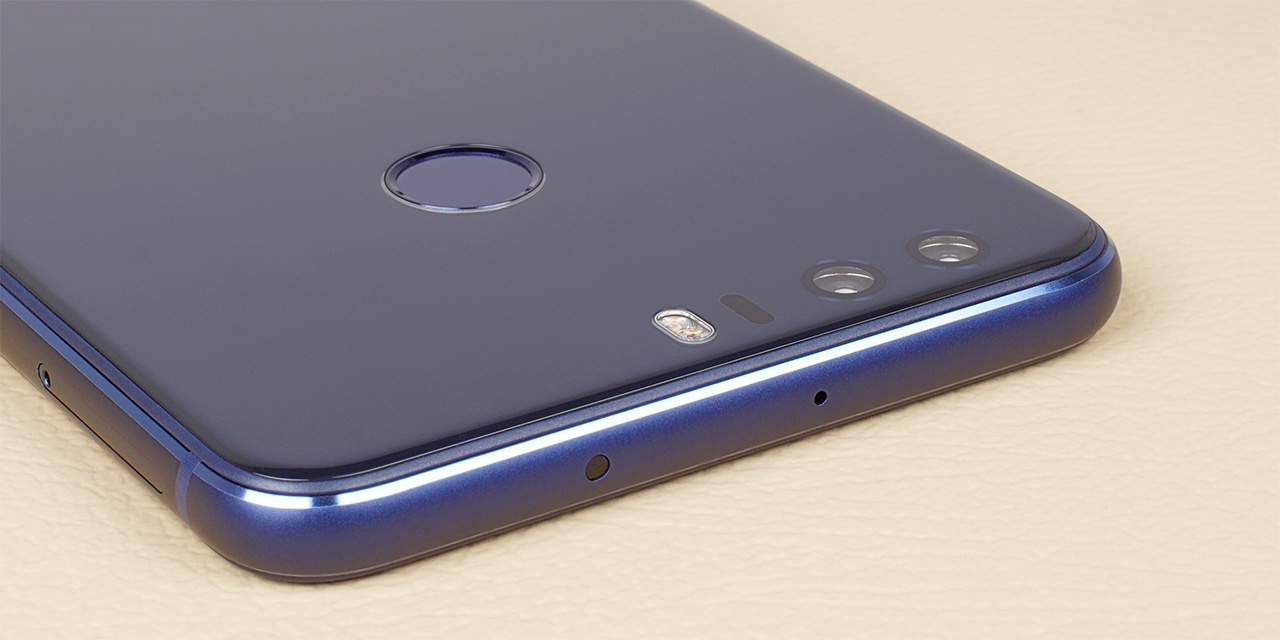


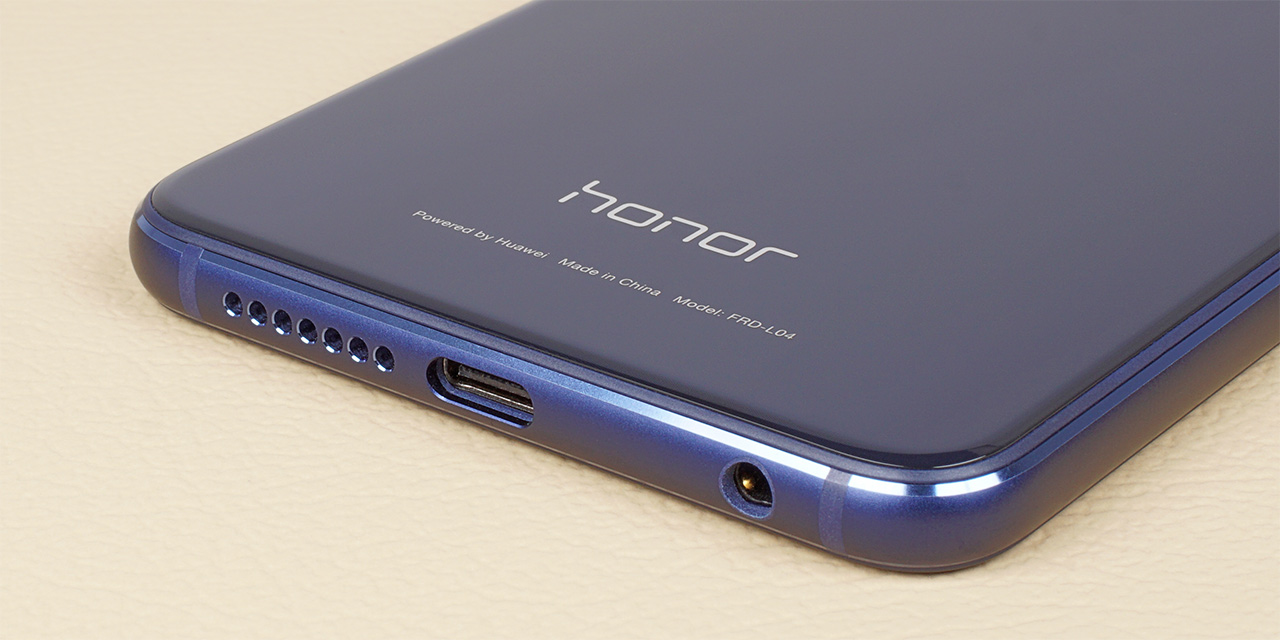
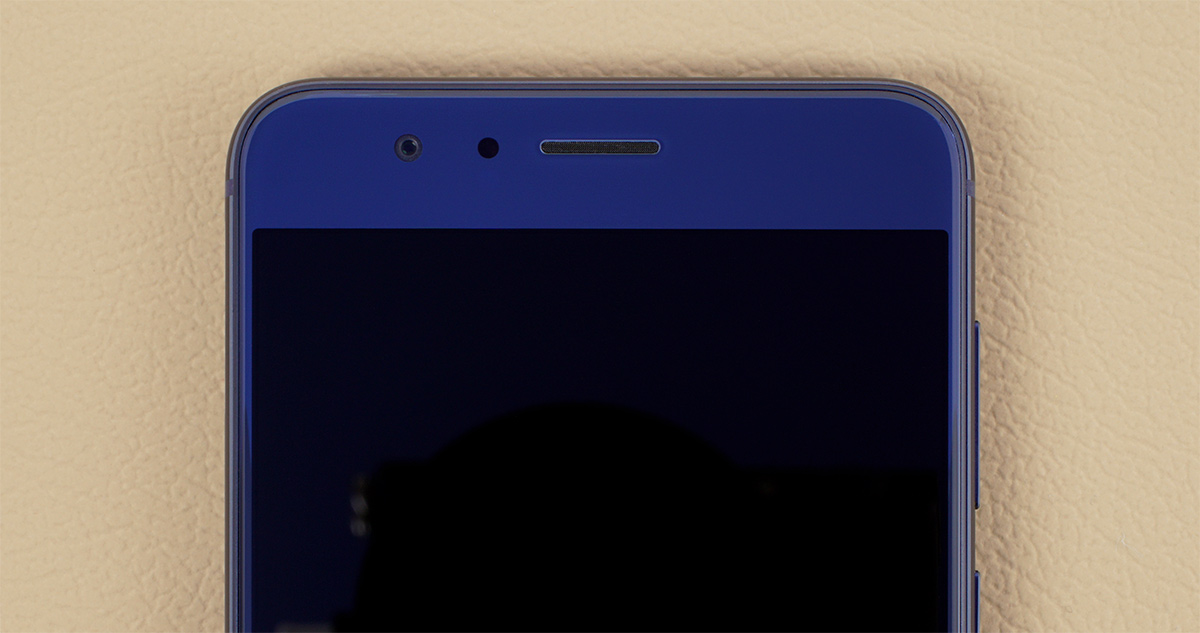
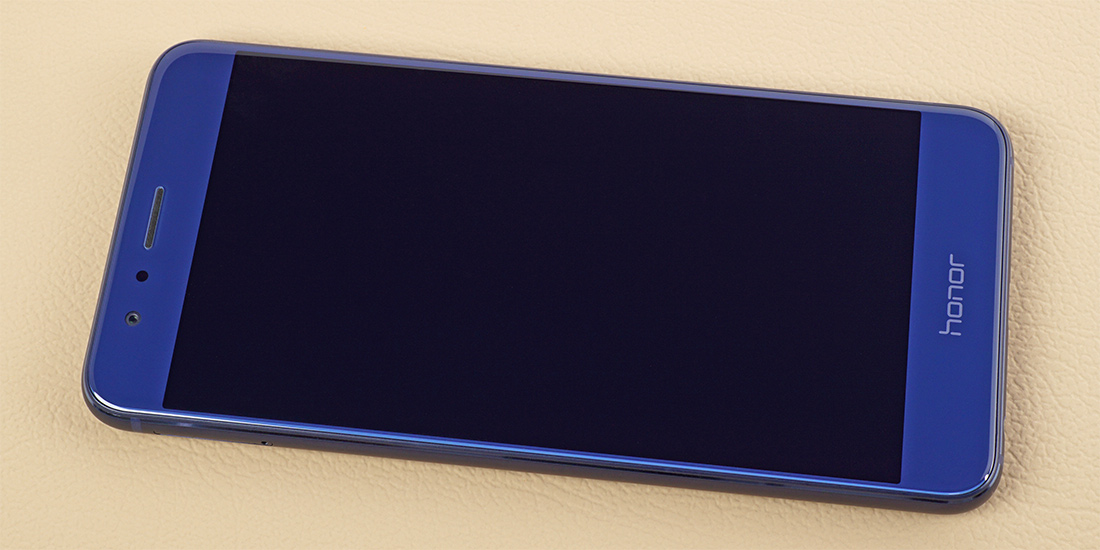








95 Comments
View All Comments
Matt Humrick - Friday, October 14, 2016 - link
That's a good point. The Smart mode selectively reduces screen brightness when using specific apps. It does not alter screen brightness for the PCMark test, which is one reason why there is not a bigger gap between it and the Performance mode; however, it does drop brightness from the calibrated 200 nits to about 100 nits when using the Chrome browser, which would increase the battery life in our web browsing battery life tests (these were run in Performance mode).prku - Friday, October 14, 2016 - link
Honor 8 is not a dual-standby dual sim phone. Please check again. it is supposed to have Dual Sim Full Active (which is a major selling point). DSFA is supposed to be present in all but Indian variations of the Honor.randomlm - Saturday, October 15, 2016 - link
Thanks for the nicely written, well balanced and non-biased review matt. This is the standard I've come to expect from anandtech that imo, some other reviewer on this site hasn't been delivering, especially on the camera portion of the review.Of course, entirely just my opinion
Feegenie - Saturday, October 15, 2016 - link
Fair.........jvl - Saturday, October 15, 2016 - link
"It’s a bit unfair to point our fingers solely at the OEMs and carriers, of course, because it was Google that created this mess and, ultimately, only Google can clean it up."What.
lagittaja - Saturday, October 29, 2016 - link
Do you even Android? Version distribution. Google can't force OEM's or carriers to update the devices.Even Android N's "auto update" doesn't really fix anything.
Why would the carrier or OEM keep updating the devices if they can just drag their feet on the ground making the update process as slow and painful as possible or just flat out not update them? Even once? The consumer will just buy a new device anyway.
Between 29th Aug and 5th Sept, of all the devices "phoning home" to Google a whopping 81.3% were running Android Lollipop 5.1 or older version.
If you take Lollipop out of the equation, 46.3% of the devices were running KitKat 4.4 or older.
If you take KitKat out of the equation, still almost 20% of the devices were running Jelly Bean 4.3 or older..
https://developer.android.com/about/dashboards/ind...
http://www.infoworld.com/article/3072591/android/g...
Google even tried to downplay the issue during May I/O event saying "it's not fragmented".
https://data.apteligent.com/download-report?report...
Yeah, that looks SO much better... 80%+ of devices being used are running Lollipop or older. A third of the devices being used are running KitKat or older..
And saying yeah, well only KitKat, Lollipop and Marshmallow matter because reasons and hey look at that 92% of devices being "used" are running Android OS's that "matter" and oh hey in contrast to iOS there's only iOS8 and iOS9 that matter and oh hey that comprises 97% of the iOS traffic. We're just as good as Apple! Yey us!
Uhm no.. Apple keeps it tidy because they have CONTROL...
iOS 9 only runs on devices that are from 2011 or older.
iOS 10 only runs on devices that are from 2012 or older.
Google has no control what so ever of Android devices that are not made by them.
Bloody hell, there's still Android devices sold new that run KitKat. And guess what, most of them are not going to receive a single damng update because the OEM doesn't give a flying fuck about it.
Look at Apple, look at what devices they sell. Guess what, they run iOS 10 or are just waiting to be turned on so they can nag you that there's a pending update.
With Android Nougat Google should have grabbed the "bull by the horns" and just fix the God damn problem.
They should have made a way for them to be able to at least deliver the critical security updates to the devices "automagically" no matter what sort of customizations OEM's or carriers have done.
I don't have the faintest idea of how that could be done but it's the least that needs to be done.
P.S. I'm an Android user and always will be. I don't like Apple's devices or their OS but I like how good control they have over their devices.
phuzi0n - Sunday, October 16, 2016 - link
Is this a phone review or a car review? We could do without all the car analogies in the first three paragraphs.Badelhas - Sunday, October 16, 2016 - link
I hate these Chinese UI skins which are iPhone iOS imitations. But that's just me.nkuehn - Friday, October 21, 2016 - link
Matt, did you also do testing on the Cellular Performance? Anandtech is famously good at really testing and not just testin, but I'm totally missing this part. I'm asking because some other reviewers had serious issues with the LTE performance of the device, losing LTE connection in well covered area etc.Maybe partner with people like http://cellularinsights.com/ - they have the testing hardware for cell that you have for displays and all the other stuff.
Savanah - Thursday, October 27, 2016 - link
I am so glad I went for the Moto Z Play instead of the Oneplus 3. It has a premium build quality, great display, awesome battery life, buttery smooth performance and decent cameras. It also excels in areas we tend to take for granted like call quality and signal retention. And to top it off it is bound to get fastest Android updates of any non Nexus/Pixel device. What else can you wish for in a $350 smart phone?